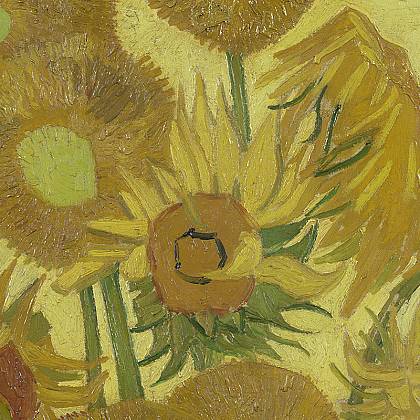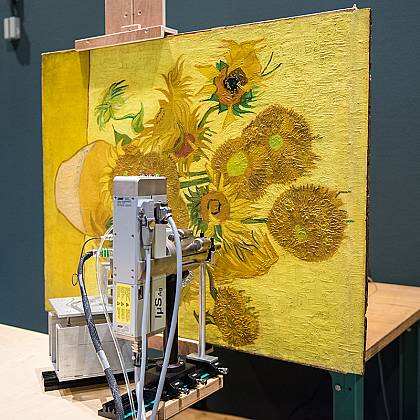Repetitions
Sunflowers
When Van Gogh was satisfied with a particular subject, he sometimes painted 'repetitions' of his own work. The Sunflowers paintings are an example of this.
In August 1888, Van Gogh painted four large canvases with vases of the flowers. He made copies of two of them – the ones with a large bunch of sunflowers in a vase against a blue and against a yellow background. Those five versions of Sunflowers can now be found in museums all over the world.
The whole thing will therefore be a symphony in blue and yellow. I work on it all these mornings, from sunrise. Because the flowers wilt quickly and it’s a matter of doing the whole thing in one go.
Vincent van Gogh to Theo van Gogh, 21 or 22 August 1888
Which came first?
Van Gogh painted the Amsterdam version in January 1889, based on his still life from the previous summer (London version). He did it for Gauguin, who had asked him for a painting with sunflowers against a yellow background.
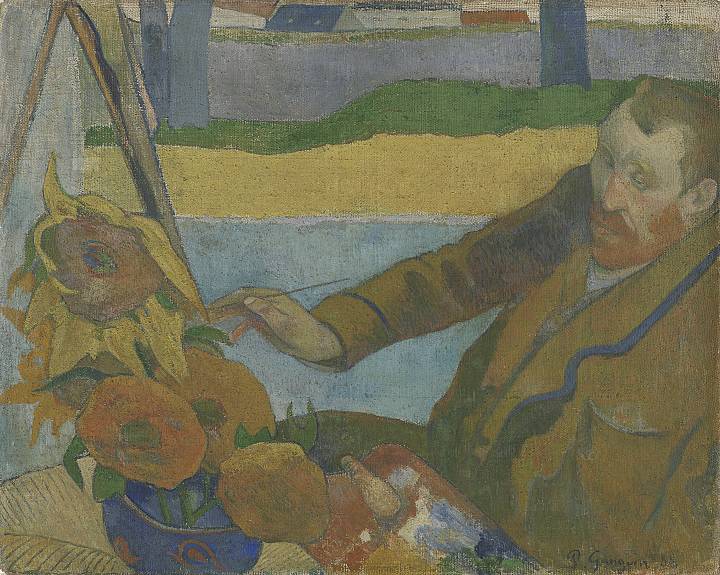
Gauguin saw the Sunflowers paintings that Van Gogh had used to decorate his Yellow House. He was so impressed that Van Gogh decided to paint more of them. The new paintings were based on the earlier ones.
Paul Gauguin, Vincent van Gogh Painting Sunflowers, 1888
Van Gogh Museum, Amsterdam (Vincent van Gogh Foundation)
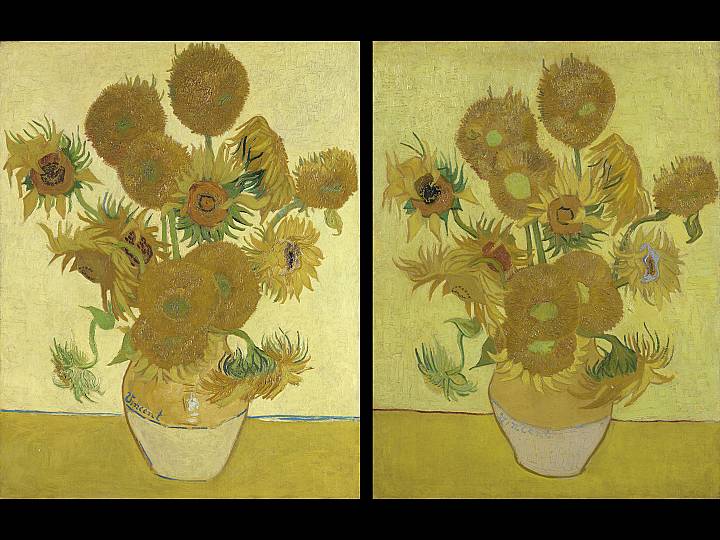
Researchers wanted to know which version of Sunflowers with a yellow background was painted first.
Technical analysis provided the answer. Van Gogh made certain changes while painting the London version, which were included in the Amsterdam version from the beginning.
Sunflowers, 1888, National Gallery, London (left) and Sunflowers, 1888, Van Gogh Museum, Amsterdam (Vincent van Gogh Foundation) (right)
In the London painting, for instance, Van Gogh added a drooping flower. He painted it on top of the yellow background, which he had applied using thick layers of paint.
The Amsterdam version is a copy of the London one. In this case, he left a space for the drooping flower when he painted the background, which was done first.
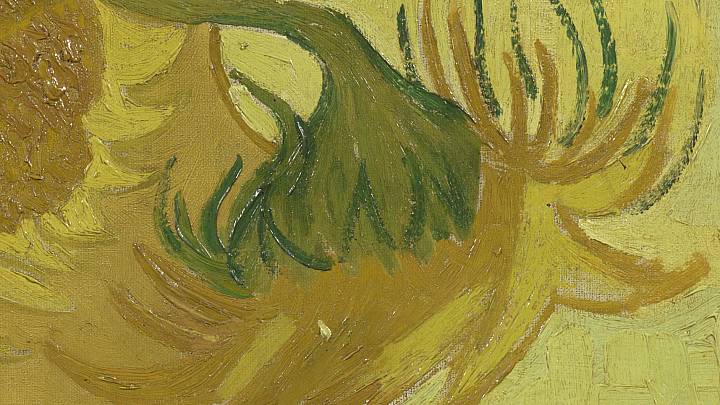
This is clearly visible if you shine a light through the canvas from the back. The light passes through the thinly painted layers more easily, making the thicker areas look darker.
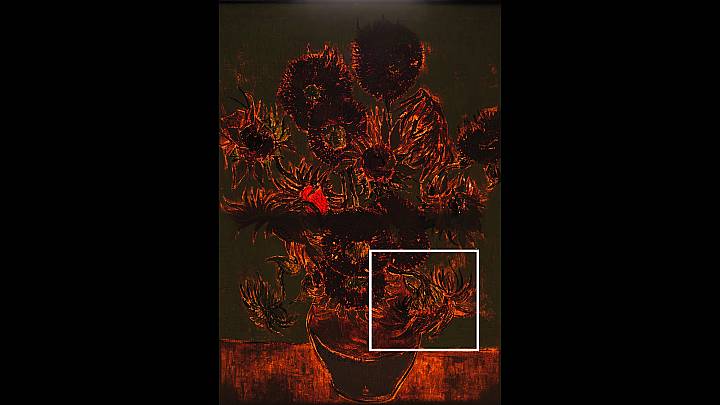
Sunflowers, Amsterdam version, in transmitted light (light shone through the back of the canvas).

Van Gogh often painted ‘repetitions’ of his own work, for example his paintings of his bedroom. The new version was usually intended for sale or as a gift.
Vincent van Gogh, The Bedroom, 1888
Van Gogh Museum, Amsterdam (Vincent van Gogh Foundation)
